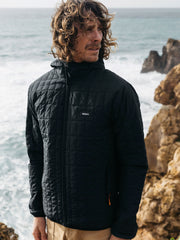Scientific studies are catching up with what I’ve intuitively known and felt my whole life, the power of the sea to heal. The findings in these studies show how surf therapy involves active engagement and immersion in the sea that can create a sense of respite from everyday and acquired anxieties and disabilities and promote mental health outcomes. The health benefits of surf therapy are linked to the fluid and dynamic nature of surfing and the sea. The multi-sensory nature of surfing is linked with improved health, activating all our sensory systems at a cellular level and enhancing ‘neuroplasticity’ - helping the brain’s ability to become more agile and adaptive. The added challenge and unpredictability associated with surfing also builds resilience, helping us better cope with stress. Learning to surf in a group context can enhance a sense of belonging and identity through shared experiences in the surf. For amputees and those with spinal chord injuries, surfing can reduce dependency on opioid medication and improve balance and mobility. Those with Cystic Fibrosis found they could breathe more easily a!er surfing, the saltwater linked with fewer pulmonary flare-ups.
Surfing is an embodied way of interacting and experiencing the natural world, something we are growing increasingly separated from. From a research perspective, the challenge is how to measure or capture health and wellbeing outcomes in such a complex, fluid, and dynamic environment like the surf so we can better communicate the benefits to health professionals and policy makers. To understand in greater depth, the richness of these experiences of immersion in the sea that take us away from our worries on land, we also need more creative and participatory methods of evaluation.
As part of my research, I worked with a surf therapy non-profit in Ireland, Liquid Therapy, and a group of young surfers with autism to better understand their experiences. Using a technique called Body Mapping, we explored their feelings and emotional wellbeing. Body Mapping engages the senses and draws on similar methods used in art and dance therapy as well as mindfulness-based practice. It encourages active and playful participation in the research with the aid of objects, symbols, colours and sensations. It also incorporates reflection and storytelling that provides the means to creatively explore the relationships between personal, social and natural worlds.
Using a creative and embodied approach like Body Mapping created a space for different forms of expression, supporting wider forms of engagement and communication that didn’t rely solely on traditional forms (written/verbal) that could exclude or alienate. The young surfers’ accounts revealed shifts in their sense of identity, self-awareness and connection to nature, improving confidence, interpersonal and communication skills for those with low self-esteem.
Surf Therapy provides a lens to see, understand and experience the sea as healing, restorative and health-enabling. It offers potential for novel health care interventions and health promotion, especially at a time of heightened psychological distress globally, that will continue after the pandemic is over. To tap into and realise the potential of surf therapy in a fair, just and inclusive way we need to restore the ocean as a safe and healthy space for all.

































































































